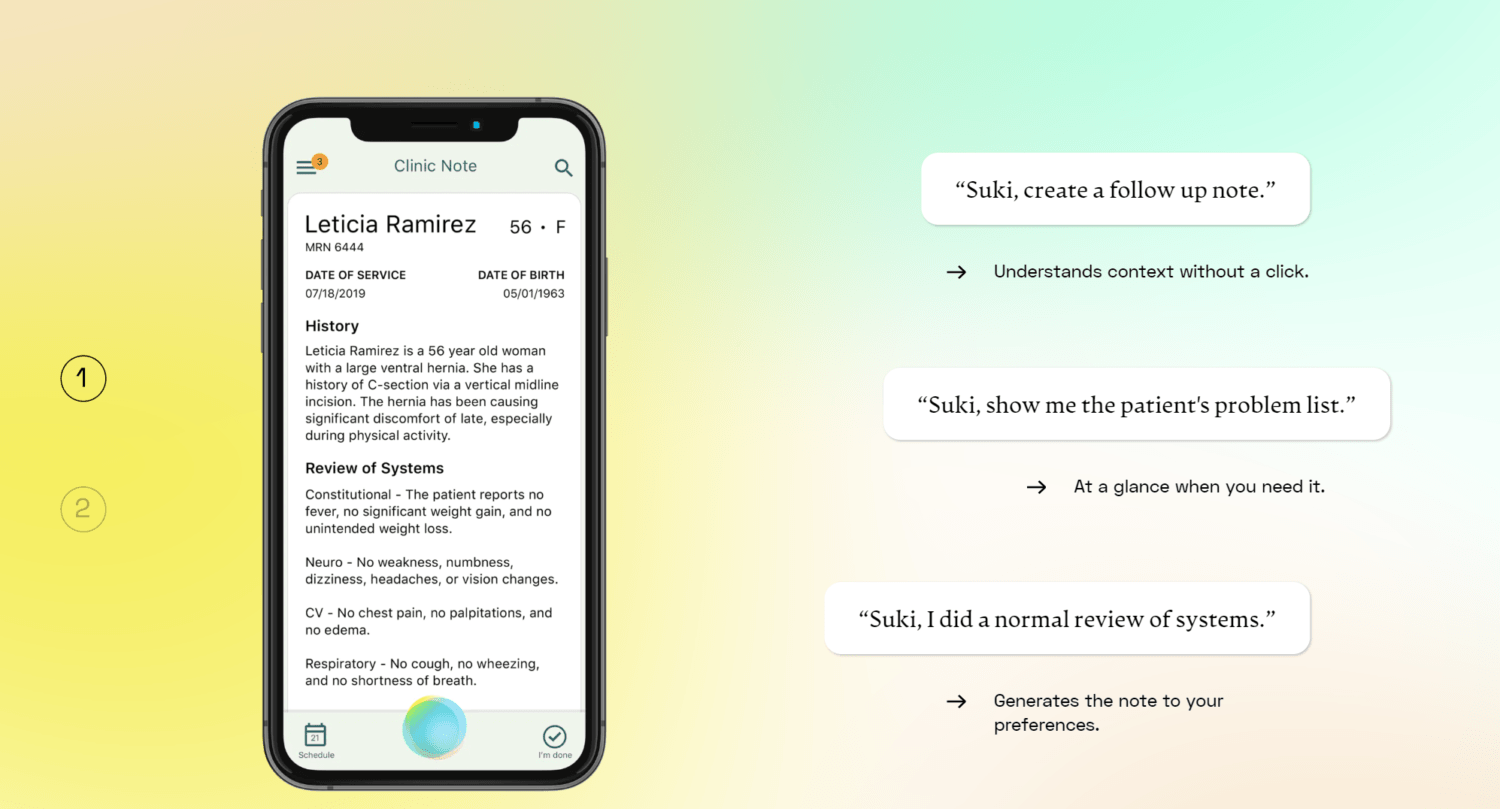
What You Should Know:
– AAFP Innovation Lab pilot program with Suki, an AI-powered, voice-enabled digital assistant for doctors, significantly reduced EHR documentation time and burden for family physicians.
– The pilot studied the impact of a digital assistant used for visit note completion for over 15 to 30 days by 10 family physicians.
– The time and motion results showed a 62% decrease in documentation time per patient, a 51% decrease in documentation time during clinic, and a 70% decrease in after-hours charting.
It’s no secret that physicians hate the administrative burden that comes with their electronic health record (EHRs). The technology wasn’t originally designed with their workflow in mind, and as a result many family physicians see it as an impediment to patient care, putting a computer in that sacred space between them and their patient. The documentation burden associated with EHRs is one of the top concerns of family physicians, according to the American Academy of Family Physicians’ (AAFP) annual Member Satisfaction Survey.
“The family medicine experience is based on a deep patient-physician interaction that requires support from technology. Today’s EHRs have greatly eroded the experience rather than enhancing it,” said Steven Waldren, MD, MS, AAFP vice president and chief medical informatics officer. “The vision is to help family physicians care for patients while using health IT that works for them, not against them.”
In order to address the frustration of EHR documentation burden, the AAFP established an Innovation Laboratory last year to test emerging artificial intelligence and machine learning tools that can address family physicians’ top challenges. As part of the first innovation lab pilot, AAFP selected Suki, an AI-powered, voice-enabled digital assistant for doctors to understand if it will greatly reduce documentation burden and family physician burnout.
Suki uses AI, machine learning, and natural language processing to complete administrative workflows, such as creating clinically accurate notes and retrieving patient information from the EHR. Physicians speak naturally, without having to memorize rote commands, and Suki accurately understands and completes their tasks.
“Suki was chosen for the first pilot for several reasons. The company was founded with the goal of helping physicians spend more time caring for patients and less time on administrative tasks. Increasing physician job satisfaction is the ultimate goal of our Innovation Lab,” said Waldren. “The company is actively and successfully marketing to primary care and family medicine, and the solution didn’t require any new hardware for the physicians who tested it in practice.”
Pilot Protocol & Results
The lab studied the impact of a digital assistant used for visit note completion for over 15 to 30 days by 10 family physicians using the athenaOne EHR from athenahealth. The impact was assessed through a qualitative time and motion study and a qualitative provider survey and interviews.
The pilot results show 100 percent of physician users saw time savings and a dramatic increase in satisfaction with notes completion, efficiency, and EHR use for other administrative tasks. The time and motion results showed a 62% decrease in documentation time per patient, a 51% decrease in documentation time during the clinic, and a 70% decrease in after-hours charting. Providers had an 84% improvement in their satisfaction with the time needed to use their EHR for other administrative tasks. Several physicians described this impact as a “breakthrough” in their practices. Full results and analysis are available in a white paper on the pilot.
The Digital Assistant was most helpful with notes that required anecdotal or complex histories and assessments. For more structured visits well suited for templates, for example, annual wellness visits, physicians did not use the digital assistant as at the time of the pilot, it did not support the insertion of structured text in discrete EHR specific fields.
“Suki was chosen for the first pilot for several reasons. The company was founded with the goal of helping physicians spend more time caring for patients and less time on administrative tasks. Increasing physician job satisfaction is the ultimate goal of our Innovation Lab,” said Waldren. “The company is actively and successfully marketing to primary care and family medicine, and the solution didn’t require any new hardware for the physicians who tested it in practice.”
The Promise of Adopting Digital Assistants
Digital Assistants are a new category of innovative products that intend to greatly reduce documentation burden. These clinical digital assistants are akin to well-known mainstream solutions such as Alexa or Siri. They use voice recognition, natural language processing, and artificial intelligence to provide physicians with a digital assistant that continually listens, learns, and adapts to a physician’s practice. The longer-term goal is for the digital assistant to behave like an MA or RN who understands the preferences of a physician and can anticipate their needs.
In some specialties, these products are being positioned as virtual scribes to replace more costly human scribes. In family practices where human scribes are often not affordable, these products offer much-needed relief of clerical and documentation burden.
“We are thrilled with the pilot results and excited to roll out Suki to a larger cohort of doctors,” said Nathan Gunn, MD, chief operating officer of Suki. “The AAFP and Suki are mission-aligned on lifting the administrative burden from physicians, especially in primary care where the burden falls disproportionately.”
“Digital assistants like Suki show great promise as an essential technology to optimize the family medicine experience,” said Waldren. “In these initial results, physicians recovered time and focus previously lost to clerical burden. The reduction in time and urgency dramatically reduced after-hours work at home and reduced physician burnout.”
Future Deployments
“The limited number of pilot participants in this initial study is a limitation,” Waldren notes, “but the results do demand further and broader study.” The next step is to move the Suki pilot into stage 2 and prove these results with a larger field of physicians.
Click here for more information about the pilot and results

